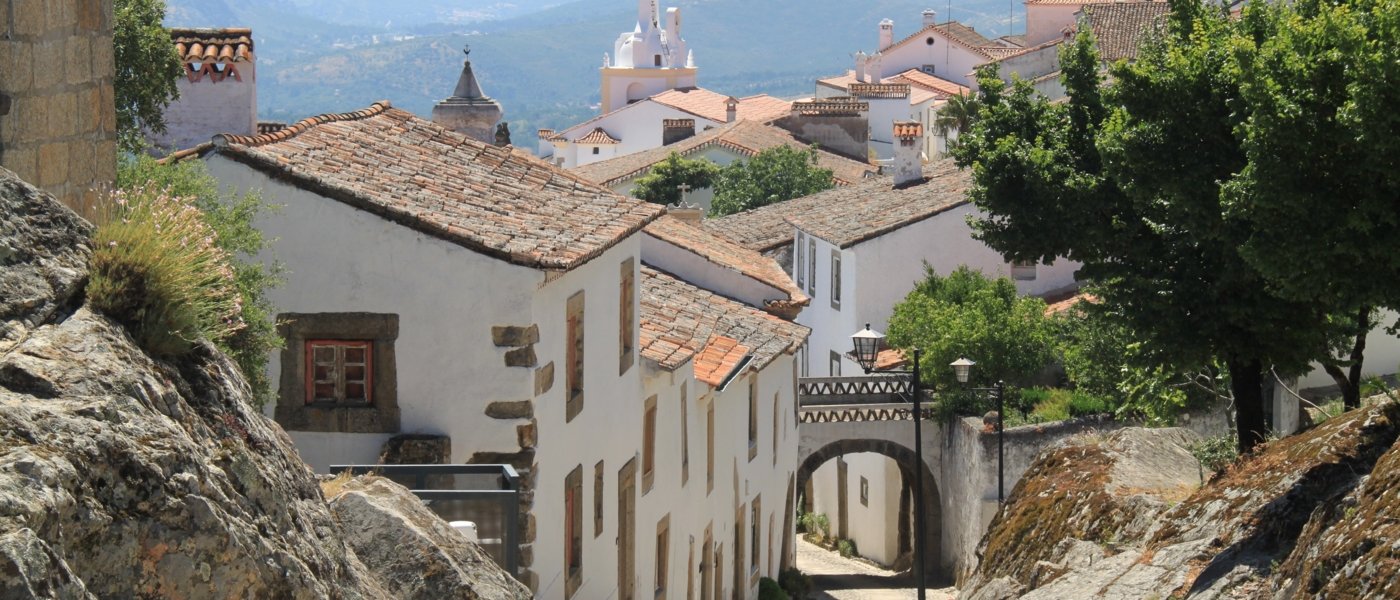We should start by saying that Alentejo is, literally, Portugal’s hottest wine region: far from the Atlantic influence, its typical continental climate means baking summers and cold winters. But Alentejo is also “hot” in the other sense of the world: its rich, fruit-forward, “new world” reds have put it on the wine map as an emerging world-class destination that most in-the-know people are talking about.
Covering a third of the country, Alentejo is one of the largest winemaking regions in Portugal, and although there are some white wine producers scattered around, it is red Alentejo wines that have made a household name of this land covered in undulating plains, where wheat is the main crop and poor soils are used for olive trees, oaks (Portugal’s is the world's leading cork producer) and of course, vineyards.
You can start exploring this southern winemaking region by driving an hour and a half east from Lisbon to the town of Évora, and then continue north towards Estremoz or south to Reguengos de Monsaraz, all of which offer an interesting cultural insight into Portuguese people, their lifestyle and gastronomic heritage.
Alentejo wines: Portugal’s new world
Some say that Alentejo wines are the “new world” wines of Portugal: much like Australian or Argentinian reds, those produced in the scorching hot summers in the south of this Portuguese region are rich, full-bodied, fruit-forward red wines that appeal to a wide range of palates, and that in the last few years, have successfully positioned the region on the international wine stage.
These fantastic wines are well-worth the detour to Alentejo for those wine enthusiasts landing in Lisbon or staying in the country’s capital for a few days. There are plenty of traditional tavernas where you can effortlessly pair them with a wonderful home-made lunch based on local produce. Try one of the most renowned regional dishes, Carne de Porco à Alentejana (marinated pork stewed with clams) and see for yourself!
The Alentejo Wine Route
The Alentejo Wine Route will take you down a few winemaking towns (Évora, Estremoz, Borba, among others) for some memorable tastings and sights, but keep in mind that modernity is not the region’s forte and it is extremely recommended to book your winery tour ahead. Most wineries offer tours of their vineyards and cellars and guided tastings of their best vintages. Call in advance to avoid disappointing “closed” signs on the day of your visit, relax and enjoy!
Make sure you also include some time for sightseeing while tasting your way down the Alentejo Wine Route: its capital, Évora, was listed as National Heritage by UNESCO in 1996. Surrounded by a medieval wall, it is the second richest city in Portugal in terms of historical monuments –after Lisbon.
A stone throw’s away from the country’s main city, the hottest wine region in Portugal awaits! Come discover Alentejo and its superb reds!








